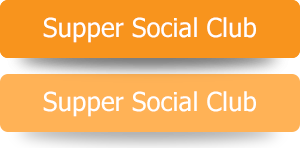Work Incentives Protecting Health Coverage for People with Disabilities
by Lesley Lopez
Many SSA beneficiaries are afraid of losing their health insurance coverage because of employment, however, SSA provides protections to SSA beneficiaries to be able to work and keep their Medicare or Medicaid.
Extended Medicare Coverage for Working People with Disabilities. Beneficiaries receiving SSDI
As long as your disabling condition still meets our rules, you can keep your Medicare coverage for at least 8 ½ years after you return to work. (The 8 ½ years includes your nine month trial work Period)
Your Medicare hospital insurance (Part A) coverage is premium-free. Your Medicare medical insurance (Part B) coverage will also continue. You or a third party (if applicable) will continue to pay for Part B. If your Social Security Disability Insurance cash benefits stop due to your work, you or a third party (if applicable) will be billed every 3 months for your medical insurance premiums. If you are receiving cash benefits, your medical insurance premiums will be deducted monthly from your check.
Continued Medicaid Eligibility (Section 1619(B))
For beneficiaries receiving SSI
One of the biggest concerns SSI beneficiaries have about going to work is the possibility of losing Medicaid coverage. Section 1619(b) of the Social Security Act provides some protection for these beneficiaries. To qualify for continuing Medicaid coverage, a person must:
- Have been eligible for an SSI cash payment for at least 1 month;
- Still meet the disability requirement; and
- Still meet all other non-disability SSI requirements; and
- Need Medicaid benefits to continue to work; and
- Have gross earnings that are insufficient to replace SSI, Medicaid and publicly funded attendant care services.
This means that SSI beneficiaries who have earnings too high for a SSI cash payment may be eligible for Medicaid if they meet the above requirements. SSA uses a threshold amount to measure whether a person’s earnings are high enough to replace his/her SSI and Medicaid benefits. This threshold is based on the:
- amount of earnings which would cause SSI cash payments to stop in the person’s State; and
- Average Medicaid expenses in that State.
If an SSI beneficiary has gross earnings higher than the threshold amount for his/her State, SSA can figure an individual threshold amount if that person has:
- Impairment-related work expenses; or
- Blind work expenses; or
- A plan to achieve self-support; or
- Personal attendant whose fees are publicly funded; or
- Medical expenses above the average State amount.
The state of Florida 2016 annual threshold amounts for disabled and blind beneficiaries is $30,566
Other health care options:
Market Place or Affordable Care Act
A service that helps people shop for and enroll in affordable health insurance. The federal government operates the Marketplace, available at HealthCare.gov, for most states. Some states run their own Marketplaces.
The Health Insurance Marketplace (also known as the “Marketplace” or “exchange”) provides health plan shopping and enrollment services through websites, call centers, and in-person help.
When you apply for individual and family coverage through the Marketplace, you’ll provide income and household information. You’ll find out if you qualify for:
- Premium tax credits and other savings that make insurance more affordable
- Coverage through the Medicaid and Children’s Health Insurance Program (CHIP) in your state
On HealthCare.gov, you may be asked to select your state or enter your ZIP code. If you live in a state that runs its own Marketplace, we’ll send you to your state’s Marketplace website.
Medicaid Share of Cost or Medically Needy
The Department of Children and Families (DCF) determines eligibility for the Medically Needy Program. It may also be referred to as the “Share of Cost” program. The Medically Needy Program assists individuals who would qualify for Medicaid except for having income that is too high. Individuals enrolled in Medically Needy may have a monthly “share of cost,” which is similar to an insurance deductible. The share of cost is determined by household size and gross monthly income. When there are changes to the household size and income, the share of cost amount may change.
Some examples of medical expenses that can be used to meet the “share of cost”
- Unpaid medical bills owed that have not been used to meet the share of cost before.
- Medical bills the individual paid within the last three months.
- Health insurance premiums
- Medical bills that will not be paid by health insurance or any other source.
- Co-pays for medical bills.
- Medical services prescribed by a doctor.
- Transportation by ambulance, bus or taxi to get medical care.
For more information about the Medicaid share of cost please visit http://www.myflorida.com/accessflorida/
Community Health clinics (CHI)
Community Health of South Florida Inc. is a non-profit health care organization providing affordable quality primary and behavioral health care services to the residents of rapidly growing South Florida. CHI operates 11 state-of-the-art primary care centers and 31 school-based programs. All centers offer quality comprehensive primary and behavioral health care services. Our physicians are board certified or board eligible. Additionally, CHI is accredited by the Joint Commission and is accredited as a Level 3 Patient-Centered Medical Home by the National Committee for Quality Assurance (NCQA). CHI offers a “one-stop-shop” model where the organization and delivery of quality services are seamless, affordable, accessible and culturally sensitive.
For more information visit the website http://www.chisouthfl.org/
If you are a SSI or SSDI beneficiary and needs an individualized analysis of your situation please contact the Community Work Incentives Coordinator or benefits Planner in your area. Please check the SSA Website for more details: http://choosework.net.













